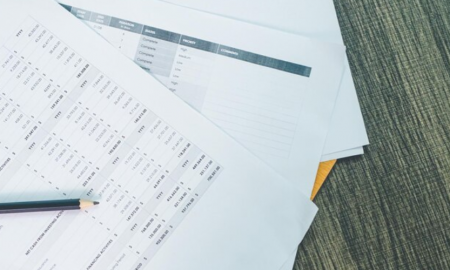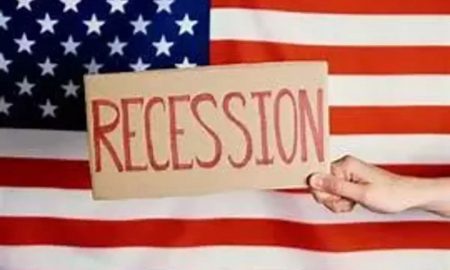
Here’s How You Can Withdraw Your Retirement Funds

Accumulating savings for retirement is a complicated process for many. Experts say that around 70% of your earnings get spent on income tax, state tax, and estate tax. To ease out things, try to find out how you can take out retirement funds and minimize taxes at the same time.
That’s a lot of money, and you certainly would benefit if you could keep that amount in your pocket. But is that possible? Well, the tips mentioned below can help you do that. Go through these smart strategies to withdraw your retirement funds. Not only will they help you stay away from the traps of costly taxes, but they also help you keep the lion’s share of the amount you saved for retirement.
Try to Follow the RMD Rules
 RMD or required minimum distribution is the minimum amount of money you will need to withdraw from retirement accounts, like 401(k) or a traditional IRA, after turning 72. When you turn 72, you will need to withdraw the annual RMD by April 1. You will have to take out the amount for the following years by December 31. For instance, if you hit 72 in 2021, you have to withdraw your RMD by April 1, 2022. If you fail to comply with the rules, the penalty amount can burn a hole in your pockets. Failures can compel you to shell out 50% excise tax. That’s also applicable in case you underpay.
RMD or required minimum distribution is the minimum amount of money you will need to withdraw from retirement accounts, like 401(k) or a traditional IRA, after turning 72. When you turn 72, you will need to withdraw the annual RMD by April 1. You will have to take out the amount for the following years by December 31. For instance, if you hit 72 in 2021, you have to withdraw your RMD by April 1, 2022. If you fail to comply with the rules, the penalty amount can burn a hole in your pockets. Failures can compel you to shell out 50% excise tax. That’s also applicable in case you underpay.
Suppose your RMD for 2021 is $30,000. You miscalculate and only withdraw $10,000. In that case, the IRS will penalize you by 50% of the amount you failed to take out. Here, $20,000 is the amount you failed to withdraw. Therefore, $10,000 is the penalty amount you will have to pay. To avoid any miscalculation, know that your RMD will differ from one year to another since several factors such as your age, life expectancy, and account balance come into play. Always keep track of how much you must take out from your account every year.
Take Out Your RMD in the Right Order

If you are not sure whether to take your RMD from your 401(k), IRA., or Roth account, never get swayed away by the instant benefits you receive. Withdrawing the money from a Roth IRA can be tempting as the withdrawal will be tax-free. However, there is every probability that you will have to pay more later on. Keep Roth IRAs aside and take out your RMD from a taxable retirement account. If you are still confused, consider this case.
How much will a 72-year-old individual have to pay in taxes if they fall in the 24% tax bracket and take out $24,000 from a traditional IRA? The answer is $5760. If they take out that $24,000 from a Roth account, there is no way they will pay any less. But if this individual decides not to withdraw the RMD from a Roth IRA and chooses to earn 7% every year on the account for ten years, the money would grow to $47,212. The amount earned will be tax-free when you take it out from the Roth account, irrespective of whether you withdraw the amount or your beneficiary.
Know-How to Withdraw Your RMD

If you have changed your jobs frequently, you might have different retirement accounts. Now, if you are closing in on your retirement, what’s the first thing you need to do? Find out how to take out your money. What should you do to figure that out? Tap on all your retirement accounts? No.
If you have several traditional IRAs, you can take your money from them. But if you want a more efficient process, add the assets from every single traditional IRA you might have and take out your money from one IRA. You don’t have to go through all those complicated paperwork when you consolidate your IRAs into a single IRA.
Donate Towards Charity
Do you want to donate your money to a cause that you support? If you have always dreamt of saving money for charity, you could use your retirement funds. If you are older than 70, your donations will be tax-free. You are allowed to take an amount up to $100,000 directly from your IRA for a charitable contribution. You won’t have to pay any tax on that amount. Since a charitable donation isn’t part of your income, you are not liable to pay any tax.
If you have the proper knowledge and can make some clever moves. You can withdraw the required minimum distribution from your retirement account without paying tax to the government.
More in Business & Finance
-
`
Curious About Travis Kelce’s Net Worth? Here’s the Scoop!
Travis Kelce’s name echoes through NFL stadiums, synonymous with athletic prowess and electrifying plays. But beyond his touchdown celebrations and record-breaking...
June 10, 2024 -
`
Everything You Need to Know About an Assumable Mortgage
What is an Assumable Mortgage? Whether you are a buyer or a seller, understanding the concept of assumable mortgages can open...
June 6, 2024 -
`
Layoff vs. Fired – Understanding the Crucial Differences
When it comes to job loss, understanding the distinction between being layoff vs. fired is crucial. While both situations result in...
May 30, 2024 -
`
When Are Business Taxes Due 2024? Essential Dates and Deadlines
Tax deadlines can be daunting, but fear not! Let’s break down everything you need to know to stay on top of...
May 22, 2024 -
`
How Much Does Jeff Bezos Make Per Hour? It’s More Than You Think!
Jeff Bezos, a name synonymous with innovation and wealth, stands as one of the world’s richest individuals. While Bernard Arnault and...
May 16, 2024 -
`
What is Portfolio Investment Entity (PIE) and How Can it Benefit You?
In the intricate world of finance, individuals seek avenues to optimize their investments while minimizing risks. One such avenue gaining traction...
May 9, 2024 -
`
What is a Bank Statement? Understanding its Definitions, Benefits, and Prerequisites
Ever wondered where your money goes? A bank statement is like a financial report card, giving you a clear picture of...
April 30, 2024 -
`
Branded Content: A Genuine Way to Connect With Your Audience
Have you ever binge-watched a series on Netflix, only to later realize that the beverage everyone’s sipping on is that brand...
April 23, 2024 -
`
What Car Does Jeff Bezos Drive? Find Out Inside His Exclusive $20 Million Collection
Have you ever wondered what car does Jeff Bezos drive? This man’s tastes in vehicles are as expansive as his business...
April 17, 2024















You must be logged in to post a comment Login